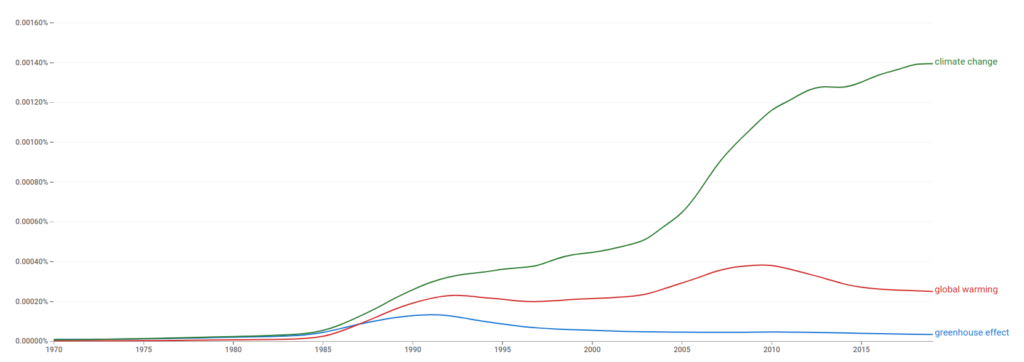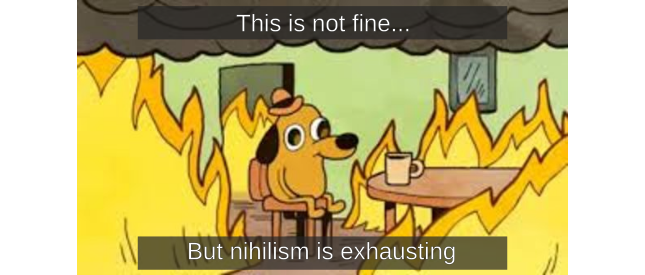“The planet isn’t going anywhere; we are!” – George Carlin
The Topical Paleolimnology arc concludes with a look at the most topical topic of our time. No, not the COVID-19 pandemic. Climate change.
Climate change is an omnipresent issue that has featured prominently in several past episodes (e.g. Popular Paleolimnology, No Plan(et) B, and Cyanobacterial Blooms); however, we’ve likely referred to it in some way in every episode to date.

So, what exactly is climate change? Although familiar territory for regular listeners, the term refers to effects associated with the increasing concentration of CO2 in the Earth’s atmosphere. The increasing trend was first documented in 1958 by Charles David Keeling and the graph showing the accumulation of atmospheric CO2 over time has become known as the Keeling Curve. This accumulation is primarily associated with industrial emissions – essentially burning things. The additional CO2 has an insulating effect on the planet, letting heat in, but preventing its escape, resulting in the planet getting warmer.

The terminology used to describe the accumulation of CO2 has changed over time. Back in the 1980s, the phrase ‘Greenhouse Effect’ was used, this was replaced by ‘Global Warming’, and more recently as ‘Climate Change’ (if not the ‘Climate Crisis’). This re-branding was to better describe the collected issues, as concerns are not limited to temperature alone, but also the variety of impacts rising temperatures have on global climate patterns due to the many positive feedback loops involved. For example, as ice in polar regions melts, the water or land that becomes exposed is darker and less reflective than the snow and ice, absorbing more heat, and increasing the rate of warming further.

Atmospheric CO2 concentrations are not only rising, the rate of the rise is also increasing, and has recently reached levels never before experienced by humans. For context, when Adam was born the concentration was 333 ppm. When Josh was born it was 346 ppm. Today, it is 414 ppm.
Many nightmare scenarios are associated with runaway climate warming, including:
- Increasing water scarcity
- Widespread famine
- Conflicts over water resources
- Breakdown of thermohaline circulation
- The arrival of Four Horsemen of the Apocalypse

Climate change is an existential threat for everyone on the planet. It is not only the environmental issue of our times, but also the political issue of our times. The best time to begin addressing the problem was 30-40 years ago. Convincing models indicating that the climate was warming were available in the 1970s, but they were filed away.
So, what can paleolimnology contribute to climate change analyses/discussions, given the discipline is largely concerned with the past rather than the future?
- Contextual understanding of environmental change in the realm of climate and temperature impacts.
- Despite recovery underway for a variety of environmental stressors (e.g. acid rain), climate change is ensuring a return to ‘baseline’ conditions will not occur on any meaningful timescale.
- Need for localized information, due to regional variability in climate responses (e.g. the Hudson Bay Lowlands were actively cooling until recently).
- Hindcast climate models for validation (i.e. apply them backwards).
- Track changes in vegetation species/community ranges.
- Provide information on variable onset of stressors by latitude,(e.g. disappearing Arctic ponds).
- Study natural variability, as phenomena like the Medieval Warm Period and Little Ice Age were not related to industrial CO2 emissions
The study of climate change is very complicated, because in addition to its direct impacts, there are many indirect impacts as the warming climate acts as a ‘threat multiplier’ by interacting with or exacerbating other environmental stressors.
- Frequency of eutrophication and cyanobacterial blooms.
- Frequency of devastating forest fires.
- Sensitivity of Daphnia to lakewater Ca decline.
- Arctic storm surges are becoming more impactful due to reduced sea ice.
- Summer anoxia/hypoxia in the hypolimnion of dimictic lakes.
- Permafrost thaw (slumps are bigger, faster, and occurring in new areas).
- Melting glaciers.
- Not limited to environmental impacts, social ills are also being made worse.
In climate change discussions there may be too much emphasis placed on hope vs. despair. It is possible to be hopeful and focus on your individual ecological footprint, but perfection is the enemy of good, and shame/guilt over the state of the world does not address the issue.

Unfortunately, addressing climate change is beyond the scope of individual actions. Canvas bags instead of grocery bags are great, but “I don’t care if you recycle or not”. Top-Down solutions at a societal level are required (things like the electrification of the transportation system) and meaningful pressure needs to be applied to governments around the world, as the greatest costs will be borne by the poorest. The question is whether political tipping points can be reached before key environmental thresholds are crossed?

